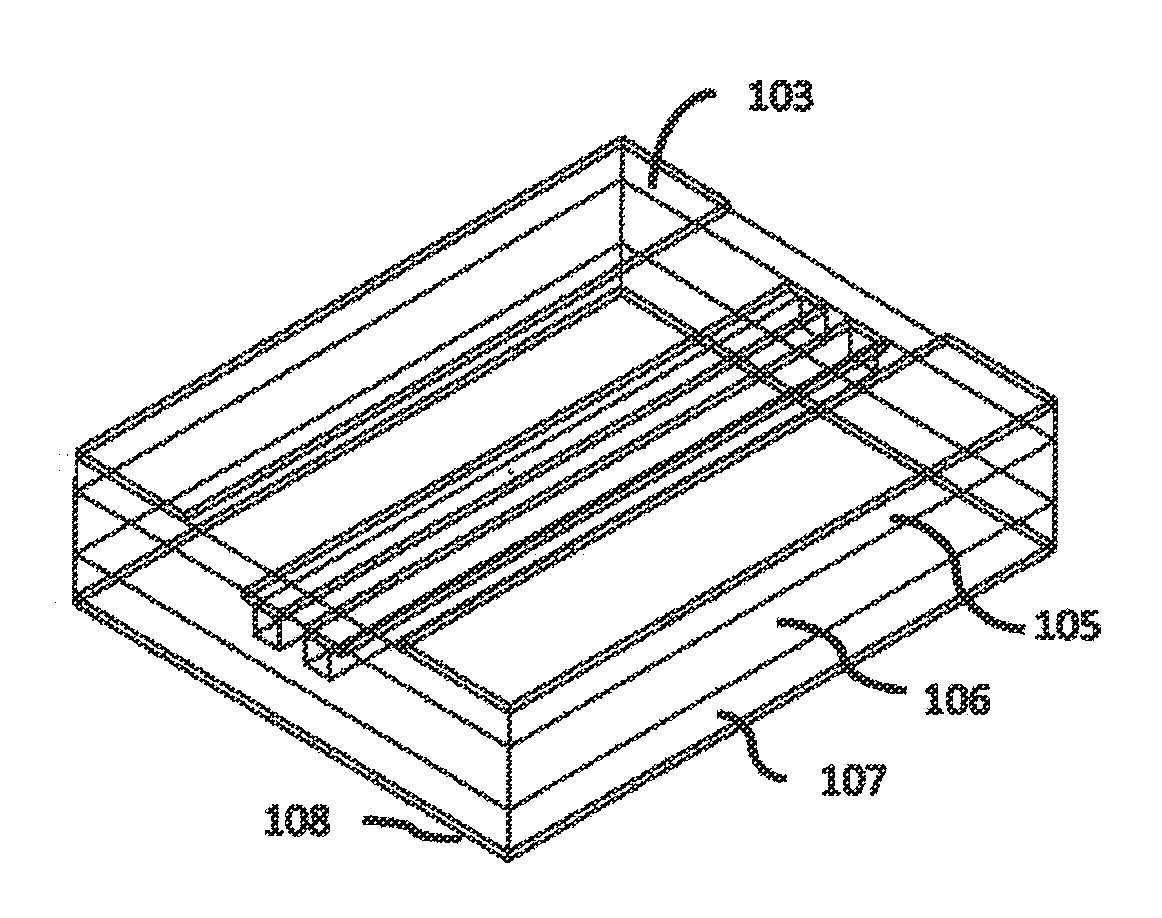Vertical trench routing in a substrate
a technology of vertical trenches and substrates, applied in the field of substrates, can solve the problems of circuit design capability or a costly on-board retimer, channel length limitations of conventional pcb routing configurations, and excessive pcb loss
- Summary
- Abstract
- Description
- Claims
- Application Information
AI Technical Summary
Benefits of technology
Problems solved by technology
Method used
Image
Examples
Embodiment Construction
[0022]In the following description, numerous details are set forth to provide a more thorough explanation of the present invention. It will be apparent, however, to one skilled in the art, that the present invention may be practiced without these specific details. In other instances, well-known structures and devices are shown in block diagram form, rather than in detail, in order to avoid obscuring the present invention.
[0023]A substrate routing scheme that includes the use of trench routing is disclosed. In one embodiment, the substrate is a printed circuit board (PCB). Trench routing is used for signal conductors in a substrate. In one embodiment, the signal conductors are differential signal pairs (D+ and D−). The vertical trench can be designed at the outer or at inner sidewalls of D+ and D− differential signals.
[0024]FIGS. 1A-D illustrate one embodiment of bottom trench routing. FIG. 1A illustrates a cross section view of the bottom trench routing. Referring to FIG. 1A, two si...
PUM
 Login to View More
Login to View More Abstract
Description
Claims
Application Information
 Login to View More
Login to View More - R&D
- Intellectual Property
- Life Sciences
- Materials
- Tech Scout
- Unparalleled Data Quality
- Higher Quality Content
- 60% Fewer Hallucinations
Browse by: Latest US Patents, China's latest patents, Technical Efficacy Thesaurus, Application Domain, Technology Topic, Popular Technical Reports.
© 2025 PatSnap. All rights reserved.Legal|Privacy policy|Modern Slavery Act Transparency Statement|Sitemap|About US| Contact US: help@patsnap.com



